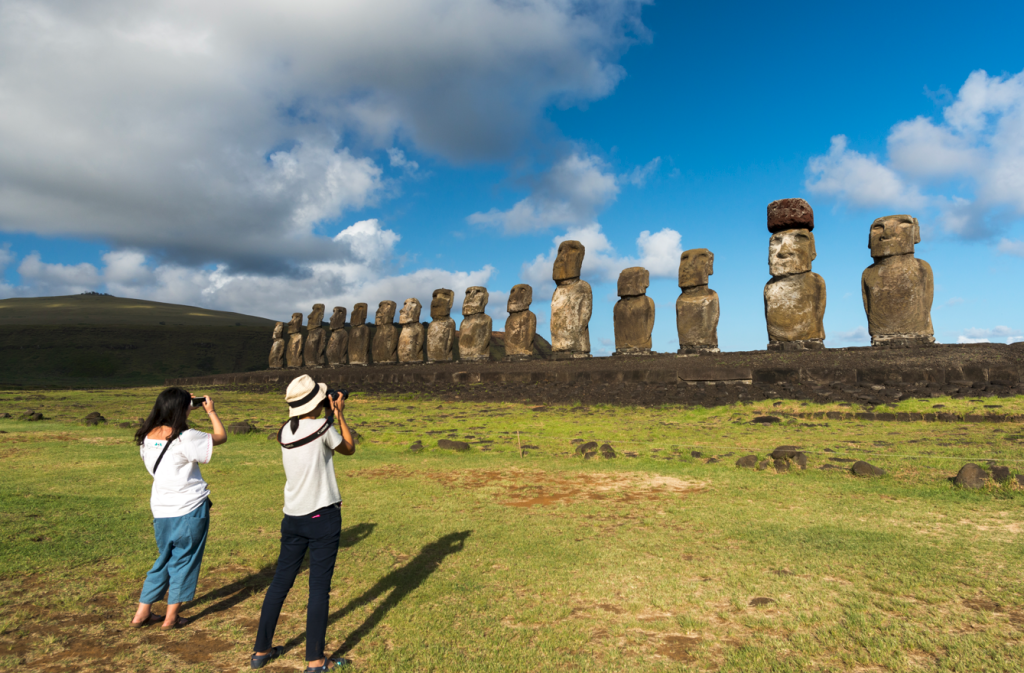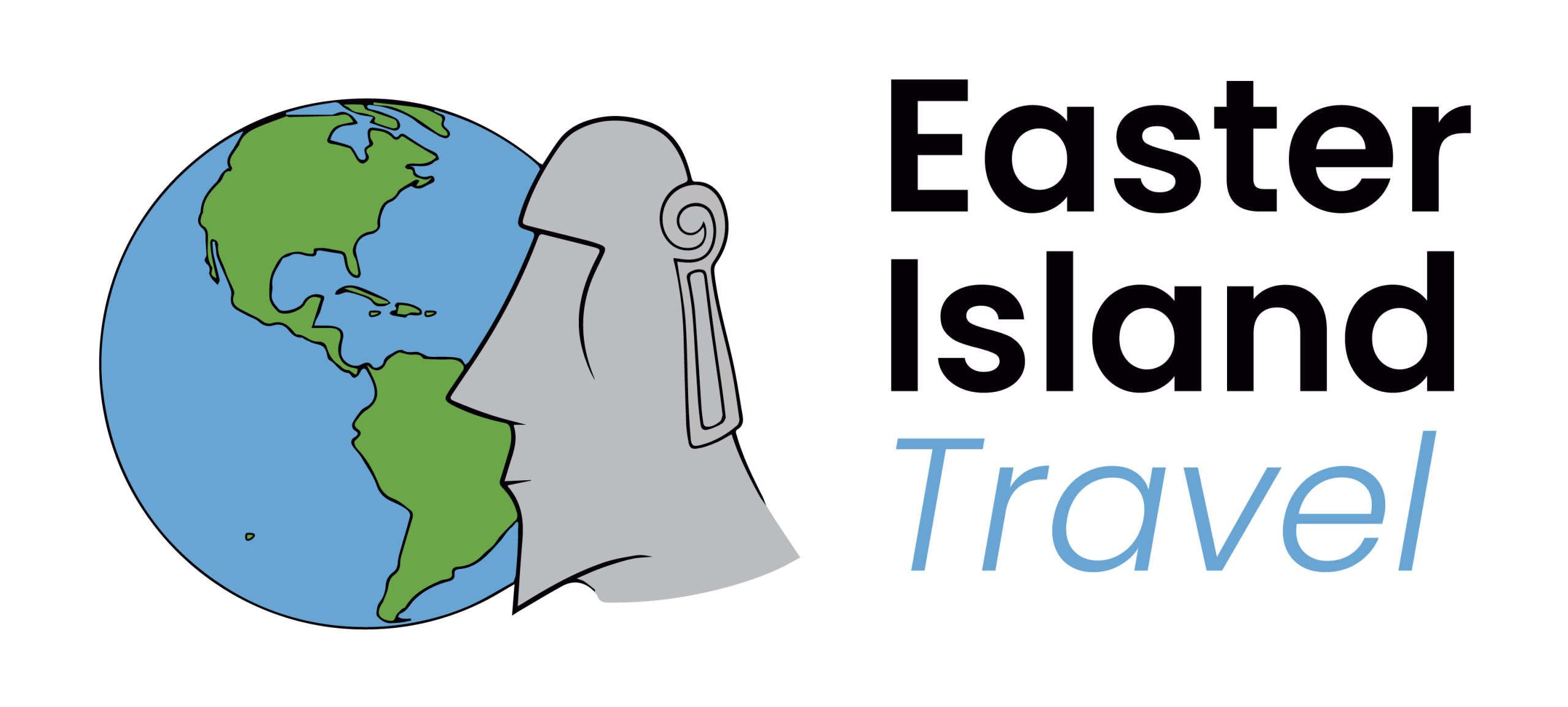Anakena Beach, located on the northern coast of Rapa Nui (Easter Island), is one of the island’s most iconic and beautiful places. With its white coral sand, framed by palm trees brought from Tahiti and ancient ahu and moai statues silently watching inland, Anakena is much more than a perfect postcard—it is a place where nature and history walk side by side.
The turquoise waters, warm year-round, invite visitors to relax, swim, and reflect. Anakena is not only a great place to unwind; it is also a site of profound spiritual, cultural, and historical significance for the Rapa Nui people.
A Legendary Beginning: Haŋa Rau, the First Home
Anakena was not chosen by chance. According to Rapa Nui oral tradition, this was the first place where the island’s original settlers came ashore, led by the founding king Hotu Matu’a.
Legend tells of a wise man named Haumaka, who had a dream in which a spirit guided him across the ocean to a fertile, uninhabited land. In this dream, he saw that the homeland of their people—Hiva, a now-lost mythical continent—was destined to vanish. The only way to survive was to seek a new home: a solitary island in the middle of the ocean, which he called Te Pito o Te Kainga, meaning “the navel of the world.”
Haumaka shared his vision with Hotu Matu’a, who understood that he needed to save his people. So he set out on an epic journey aboard two large canoes, together with his family, wise men, and skilled artisans. After weeks at sea, they finally landed at Haŋa Rau, the royal bay we now know as Anakena.
There, his wife Vakai a Heva, pregnant during the voyage, gave birth on the beach to their son Tu‘u Maheke. That child became the first Rapa Nui, marking the birth of a new civilization in the heart of the Pacific Ocean.

The Meaning Behind the Name “Anakena”
The name “Anakena” comes from two Rapa Nui words: ana (cave) and kena (masked booby, a type of seabird). It is believed to reference a nearby cave where these birds used to nest, forming an important part of the local spiritual and natural landscape.

Ancestral Monuments by the Sea
Anakena is home to two of the island’s most important ahu (ceremonial stone platforms):
- Ahu Ature Huki: Restored in 1956 by Thor Heyerdahl with help from the local community, this was the first moai ever re-erected in modern times. This marked a turning point in the appreciation and preservation of Rapa Nui’s archaeological heritage.
- Ahu Nau Nau: A stunning platform that holds seven moai, some of them topped with red pukao (headdresses made of scoria). Because they were buried for centuries, their carvings have remained exceptionally well preserved. The site was restored by Rapa Nui archaeologist Sergio Rapu between 1978 and 1980. Excavations revealed unique artifacts, such as a female moai and the first original coral eye ever found.

Things to Do at Anakena
While Anakena is not a hub for water sports, it is the perfect spot to:
- Swim in calm, crystal-clear waters that are safe and enjoyable for all ages.
- Walk along the beach at sunrise or sunset, taking in the peaceful sounds of the ocean and the warm Pacific breeze.
- Enjoy a picnic under the palm trees or taste local food such as empanadas, grilled tuna skewers, or fresh fruit juices from small food stands.
- Visit the ahu respectfully, observing the moai from a distance and appreciating their deep spiritual meaning.

Cultural Celebrations and Ancestral Memory
Every July 7, the Rapa Nui community commemorates the arrival of Hotu Matu’a and the birth of Tu‘u Maheke. This sacred day is honored with ceremonies, traditional chants, dances, and offerings at Anakena, reinforcing the island’s connection to its origins and ancestral spirit.

Getting There and Practical Tips
Anakena is located 18 kilometers from Hanga Roa. You can get there by private car, taxi, bicycle, or as part of a guided tour. The road is paved and in good condition. On-site amenities include parking, restrooms (paid), shaded areas, food stalls, and craft vendors.
Keep in mind that Anakena is part of the Rapa Nui National Park. While access to the beach itself is free, the archaeological sector—especially around Ahu Nau Nau—belongs to the protected park area, and you may be asked to present your valid entry ticket. It’s important to carry it with you at all times and to follow the park’s rules and guidelines to help preserve this sacred and historical place.

A Place to Reconnect with the Origin
Anakena is more than just a dream beach. It is the place where everything began. Here, the history, culture, and identity of the Rapa Nui people were born. Walking on its white sands is like stepping into the footprints of the ancestors, under the watchful gaze of the moai and the constant whisper of the sea.
Whether you’re looking to relax, learn, or be amazed, Anakena is the perfect starting point to connect with the soul of Rapa Nui.



Comentarios
2 repuestas a “Anakena: natural paradise and ancestral cradle of Rapa Nui”
[…] Read: Anakena: natural paradise and ancestral cradle of Rapa Nui […]
[…] I do not consider myself anywhere near capable of capturing the essence of Rapa Nui’s founding stories, so I will instead defer to this excellent passage from EasterIsland.travel: […]